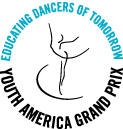This is the last installment in our series of posts on The Dance COLEctive‘s upcoming choreography showcase. We’ve talked with each of the choreographers, and today we have Melissa Pillarella with us to talk about her piece, where the dancers confront the complexities of feeling and accepting resentment by incorporating athleticism and a non-linear structure. Music from local band To Destroy a City furthers the tone and theme of the piece.

In life, I think there are always past events that people look back on and hold a little resentment or regret towards. Even if those events have brought them to a place where they are satisfied and happy, they may still think in the back of their mind about how they would like to go back and change something or do something differently. Of course, it isn’t possible, but the play between the present and the past, moving forward and looking back, is something that makes us who we are and is endlessly interesting to me.
What role did the band play in this process?
Usually music is one of the things I struggle with most, and I feel like it always becomes an afterthought once the piece is finished. I create something, and try to find something to slap on top of it that isn’t completely distracting. This time, I wanted to approach this project with a clear idea of what kind of music I wanted to use. I saw To Destroy a City perform at The Empty Bottle, and I turned to my brother and said, “I want to dance to that.” I was really into the mood and atmosphere they created with their intricate soundscapes.
At the beginning of the process, when we were first focusing on inventing movement, I played the album throughout rehearsals which I think influenced a lot of the vocabulary we created. As we got deeper into the project I was influenced by other sounds that I also wanted to incorporate in the piece, and it started to go a different direction. I decided I wanted to create a piece that used different samples of sounds I was interested in and convinced my hesitant friend, Donovan Lampa, to help me. Donovan is not a musician, so it was an experiment for both of us.
We liked what he created, but it needed something else. We decided to try reincorporating To Destroy a City, and it was exactly what the piece needed coming full circle. Now, the music is partially our experiment and partially the band (which is much better than our sorry attempt, but here goes nothing).
How did you communicate the idea behind this piece to the dancers—and was it difficult to do?
I actually waited until we were a few rehearsals in to discuss my idea behind the piece to the dancers at all. I didn’t want to feel confined by the desire to get a specific thought across, but instead I wanted to see where the piece naturally took us. It was only difficult to talk to the dancers about the idea because it wasn’t very easy for me to articulate. I do believe the original idea, whatever that was exactly, is very prevalent in the piece at least in structure and overall mood.
How much collaboration was involved in the creation of the piece?
I came into the process with some movement phrases and also gave specific assignments to the dancers to generate material. Together, we played with layering and working more in depth with the movement both I and they had created. Then I used a trial and error method for structuring the piece by watching the dancers work with various potential structures I threw out until we found one that seemed to make sense both thematically and aesthetically. Overall, I think the process was very collaborative, and I was incredibly lucky to have such talented dance artists working with me. The piece would not be the same without them.
Did you enjoy the choreographic process—or how would you describe it?
I have a love/hate relationship with the choreographic process. Like any true love, it can be horribly frustrating and totally satisfying all at the same time. Sometimes I wanted to throw out everything I had because it was shit and start over, and other times I thought that I was a genius who had just created the best work ever seen. In reality, neither are true, and I’m just beyond privileged to have a creative outlet that can sweep me up in the process… sometimes.
If you are interested in seeing this show, it runs May 18 & 19 at 8:00pm and May 20 at 7:00pm. Tickets are available here.
BIO: Melissa Pillarella, originally from Chicago, began dancing at Whitney Young Magnet High School and received a BFA in Dance from the University of Illinois. While at U of I, Melissa performed in works by Jan Erkert, Linda Lehovec, Rebecca Nettl-Fiol, Lorie Carlos and others. Currently, Melissa also dances with Mordine & Co. Dance Theater as well as independent choreographer Cristina Walterman. Melissa is excited and honored to be returning for her second season with The Dance COLEctive.










